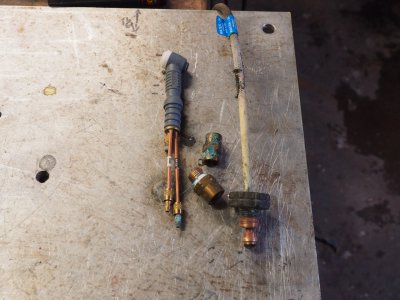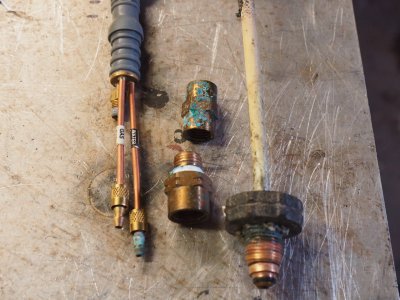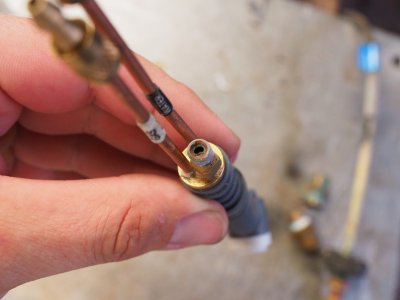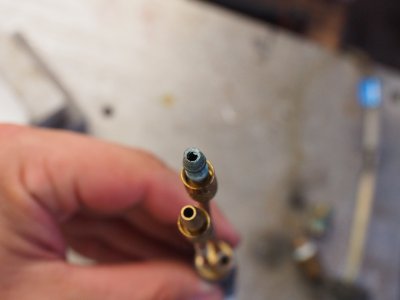So, a thing happened to me today.
I had a few welds to make on a small weldment so I get to it like usual. After the first weld I notice the water cooled torch feels a bit hotter than usual. I was probably running around 150A but the welds were short, just 6 welds at 1" each.
I let the piece cool a bit to minimize warpage and so I could reconfigure some clamps. I go to make another weld, about 1.5" long this time and halfway through the weld I hear, "Poof.......Ssssshhhhhhhh." I thought it may have been a gas related problem since my tank was almost empty but I did not loose shielding. As welders do, the bead was going great so I just kept on welding.
Upon lifting my helmet I notice a small trickle of water running down the TIG torch hose protector. "Hmmm..." I thought. That's a problem.
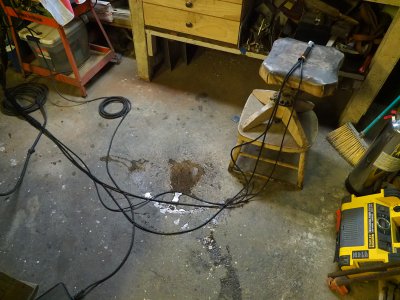
Here's what I found under the hose protector.
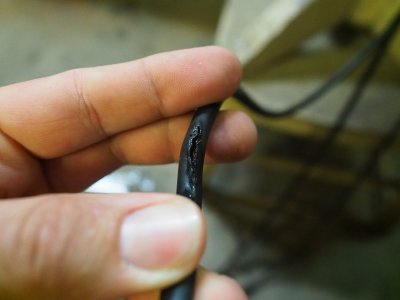
You can see the copper conductor inside.
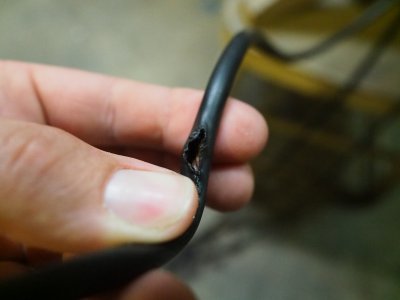
On a positive note, the weld came out great!
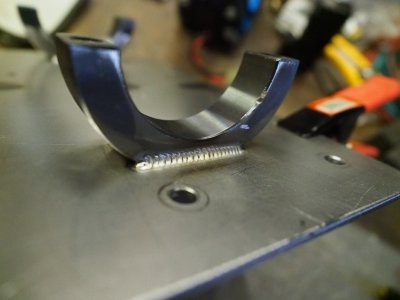
So I'm guessing what happened was the torch head got clogged up. Water could no longer circulate and steam built up until it burst the hose.
At this point I had 3 more welds to make just like the one pictured above. I let the torch cool a little and made another pass. This time steam began pouring out of the hose breach within seconds of striking the arc. The water pump was off, of course.
Might as well keep going I guess, the torch is already boned. The third weld came with so much steam that it actually wafted up and messed up my shielding! Shortly after the steam cloud came the smell of burning rubber and thick white smoke. Time to stop. I did finish that weld but even with only one weld left to perform I figured it was too foolish to continue with this torch.
Luckily I still had the old air cooled torch that I got with this welder. Unluckily I seem to have lost the back cap for it. Man, I just had 1.5" of weld to finish this part! Well, you know what they say about desperate times. I took the back cap off my water torch and taped in onto the other one. I wrapped a bunch of teflon tape around it followed by some electrical tape. Lo and behold it worked just fine!
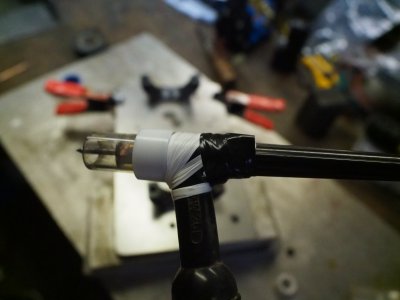
So now I'm in the market for a new torch and a proper cooler to replace this cobbled together system.
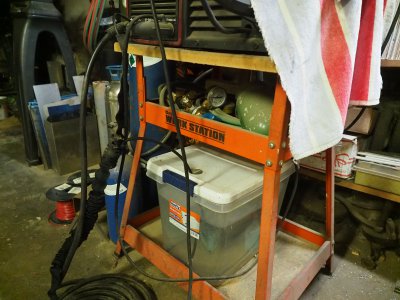
I think the problems I have experienced are due to several factors. First, my cooler is open to the atmosphere, thus it has great potential for mold growth. To mitigate this I had added a small amount of chlorine bleach to the regular tap water in the tub. The bleach has affected the hoses in a negative fashion. The hoses have become softer than when new and some have even become white from the bleach.
Also the pump I'm using cannot supply ample flow or pressure. As an example, I was looking at the Speedway model TIG torch from Weldtec and it recommends 50psi of coolant pressure. My set up cannot approach that spec, offering only a trickle at best.
Lastly I know for a fact that calcium build up is an issue with our municipal water supply. The build up is not terrible but it is present on some of the other plumbing fixtures in the home.
So now I think I might me ready to invest in a proper welding cooler and use the proper coolant in the system. The thing I have now has worked for years and I am by no means a production shop, with my welder only seeing occasional use, but I want something that will work well every time I need it. I expect the initial investment to be somewhat high but I also expect a more robust and foolproof system than my home made solution.
Any thoughts or comments?







